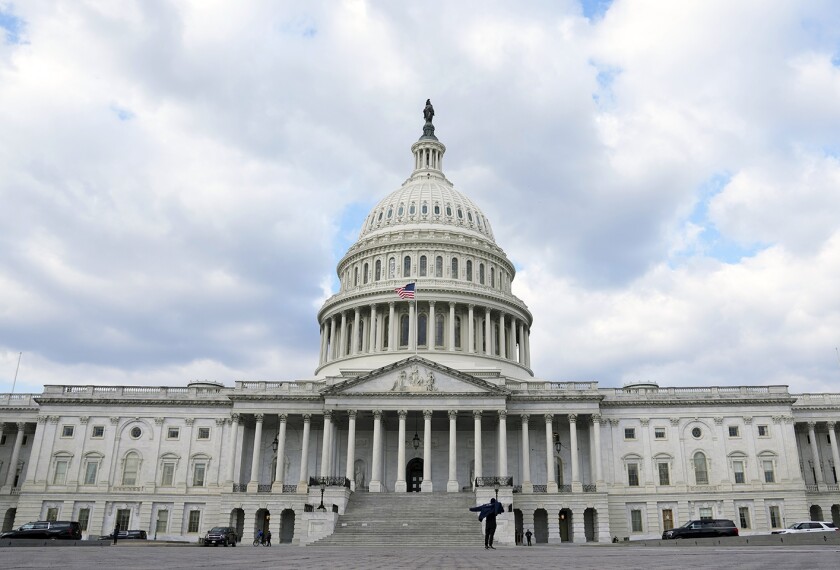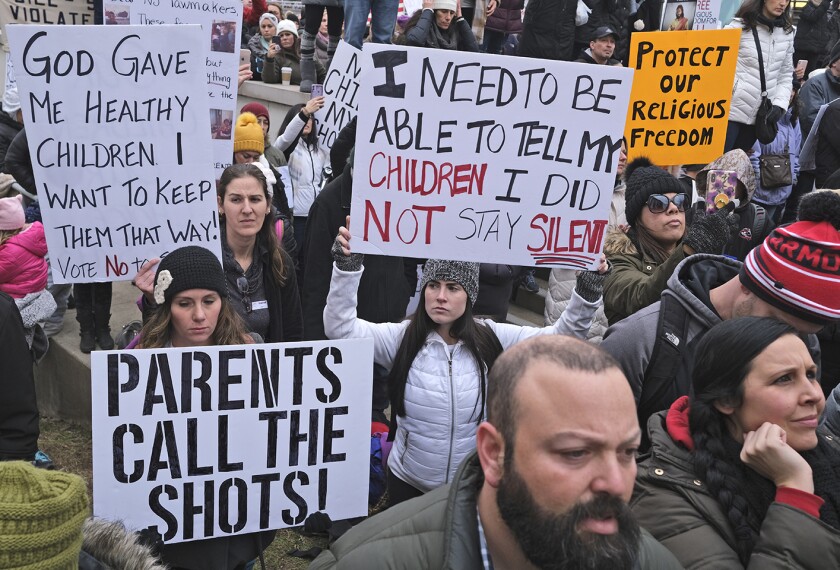The past two decades have seen big changes in the way states and interest groups handle education policy—and some of those shifts defy the growing homogeneity of national politics.
That’s one big conclusion from a new working paper that uses 145,000 campaign contributions over 57,000 state elections in all 50 states to analyze the impact of new laws promoting private school choice and “right-to-work” laws—which ban individuals from being compelled to pay for union representation—on state political coalitions.
“Shifting Alliances in State Political Parties: The Case of Education Interest Groups” also finds that education politics in U.S. Secretary of Education Betsy DeVos’ home state of Michigan, for example, have become highly polarized along party lines as measured by new policies impacting K-12 and how political donations have shifted from 2000 to 2017. But that’s not the same neat and tidy story everywhere.
The working paper, which has yet to be peer-reviewed, was written by Leslie K. Finger, a lecturer on government and social studies at Harvard University, and Sarah Reckhow, an associate professor of political science at Michigan State University.
Sorting Donations
It breaks down the source of donations into two basic camps: teachers’ unions and “education reform” groups that advocate school choice of different kinds and accountability-oriented policies. (The authors note that not all these reform groups champion all the same policies.) The paper then tracks whether those donations went to Democrats or Republicans. It also highlights more-detailed data from Michigan, Tennessee, and Washington state.
Their analysis found, for example, that from 2000 to 2016, teachers’ unions at the state level became much more likely to contribute to Democratic candidates, while so-called reform groups became much more closely aligned with Republican candidates. In Washington state, by contrast, reform groups maintained a more bipartisan stance when it came to campaign contributions.
The number of candidates for state office getting donations from teachers’ unions also has dropped significantly in recent years, the paper shows. In 2000, for example, 25 percent of those candidates got donations from teachers’ unions, but in 2016, that figure dropped to 20 percent. The paper doesn’t look at whether the total amount of those contributions has risen or fallen.
You don’t need to go far to find an example of Michigan’s polarized environment, at least when it comes to public, rather than private, school choice.
Charter School Flashpoint
Late last year, Michigan Gov. Gretchen Whitmer, a Democrat who took office in 2019, vetoed a funding increase for charter schools as part of a broad budget fight with Republicans, who control the state legislature. She did not hold up a separate spending boost for traditional public schools.
Whitmer eventually signed off on the increase for charters but not before recriminations from the state’s school choice community. But the picture is more complex elsewhere. In Washington state, for example, the study looked at 12 Democratic candidates who’ve had long careers in office. It found that eight of them shifted from getting only teachers’ union donations but no education reform donations in 2000, to getting only education-reform-group donations and no teachers’ union donations in 2016.
“I thought we were going to see this polarization story everywhere through the whole time period. That’s really not the case. There’s variation across states,” said Finger in an interview.
Another part of the story is the simple growth in education reform groups as a countervailing force in education politics, since they were a very small presence in 2000 compared with their position now, Finger noted. And teachers’ unions still contribute to Republicans at the state level, despite how things have changed over the past two decades, defying what many who focus on national politics might think.
Elsewhere, the passage of right-to-work laws correlates with a subsequently higher number of donations from teachers’ unions to candidates, “suggesting a defensive response where teachers’ unions are doubling down and rallying in the wake of these laws,” Finger said, adding that the finding surprised her. And those laws are associated with a lower number of donations from education reform groups.
Private school choice policies do the opposite, however. The paper finds that they lead to a higher number of donations from reform groups and a lower number of donations from teachers’ unions.





